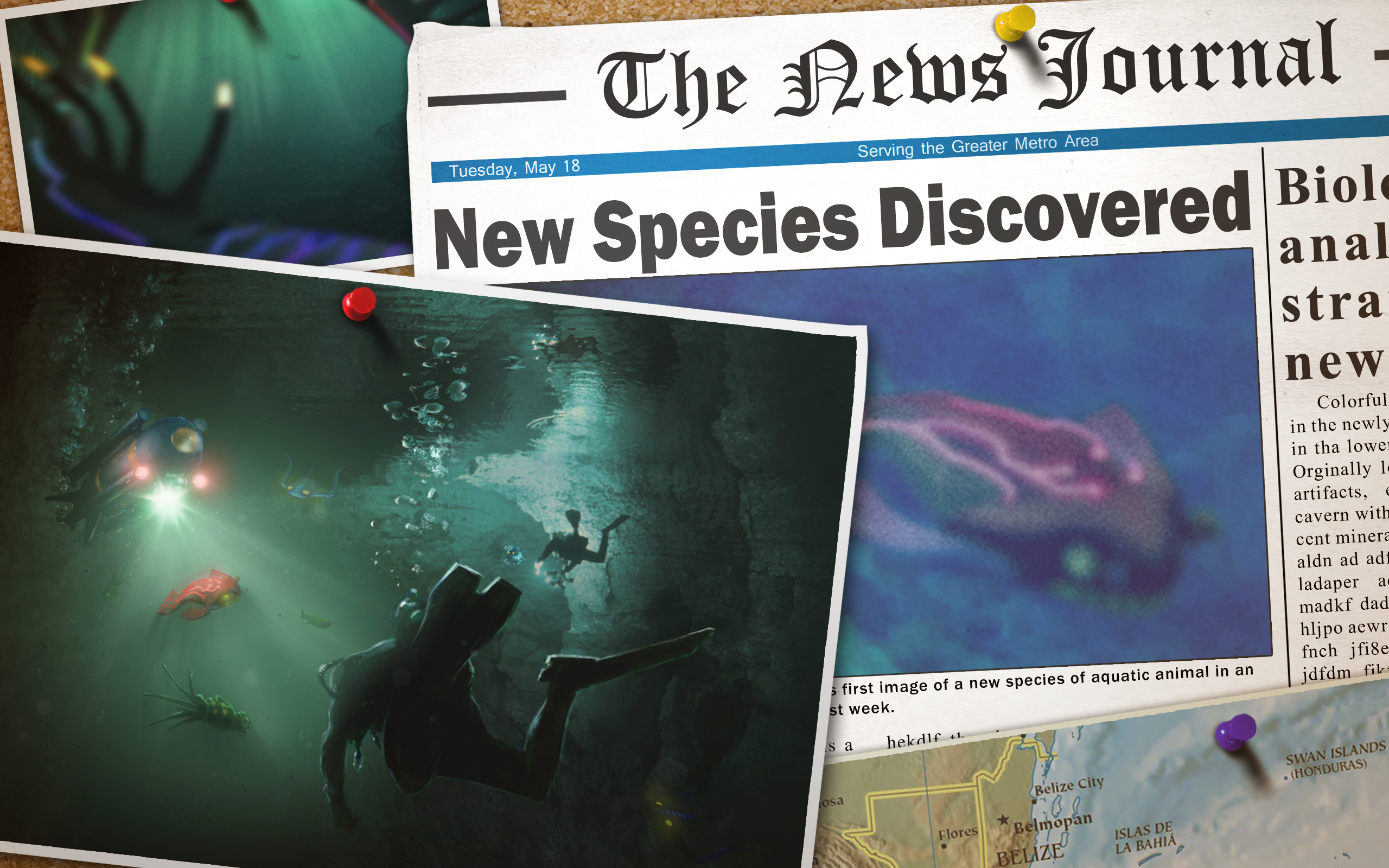Analyzing Data with ADAGE
In this book we walk you through a short analysis of some actual play data collected from our game: Oztoc.
For Whom Is This Book?
This book is aimed at anyone interested in studying data from learning games, whether they be graduate students, professional researchers, game designers, software engineers, or really anyone passionate about games. If you're completely new to programming, I recommend you check the Resources section, where I include some helpful places to get started learning Python.
But, I think anyone with an interest in analyzing gameplay data will find value in this book. We'll use real, actual data from our game (Oztoc), and along the way our analysis will reveal both the power of scriptable data analysis and the heartache of realizing that your data collection code might be buggy.
What Is Oztoc?
An expedition in Mexico reveals an uncharted lagoon teeming with life, and it's up to junior explorers to learn more about its mysteries. Enter Oztoc: an immersive world where children design circuits to lure bioluminescent creatures from the deep.


Image Credits: Learning Games Network
The game is a first-of-its kind museum installation, combining a state-of-the-art multitouch tabletop display with tactile physical blocks. The result is a hybrid museum game where students touch physical blocks to create virtual in-game circuits.

Image Credit: Insider Images/Andrew Kelly
Oztoc is a Research Environment
Oztoc is an rich environment for research on how children learn programming and design. Three of its features are key to that research:
- Rapid Exploration: While physical components mean kids can see and touch circuit parts, using virtual wires lets them quickly build, test, and iterate over the circuit prototypes.
- In-Game Telemetry: Oztoc is built on the ADAGE framework, which lets us collect deep information in real-time on children's play behavior
- Multiple Views: The museum installation itself is instrumented with multiple video cameras to get a complete view of the action at the table. By coordinating ADAGE telemetry data with video of how students play, Oztoc represents a first-of-its-kind opportunity to understand design-based learning in a museum setting.
Oztoc is a Partnership
Oztoc is a National Science Foundation funded collaboration between the Games+Learning+Society Group at the University of Wisconsin-Madison, The New York Hall of Science (NYSCI), and the Learning Games Network. Co-led by Principal Investigators Leilah Lyons (NYSCI) and Matthew Berland (UW-Madison), the project team combines learning science researchers, game designers, and museum specialists.
Oztoc Collects in-Game Play Data
Using the ADAGE framework, we're able to log discrete events as they happen in the game. In this test case analysis, we'll mainly be concerned with with events that happen when players connect and disconnect circuit components.